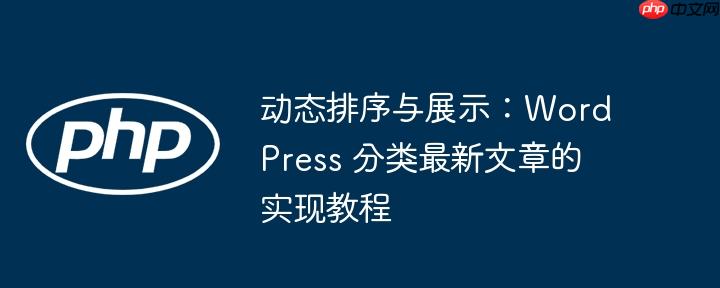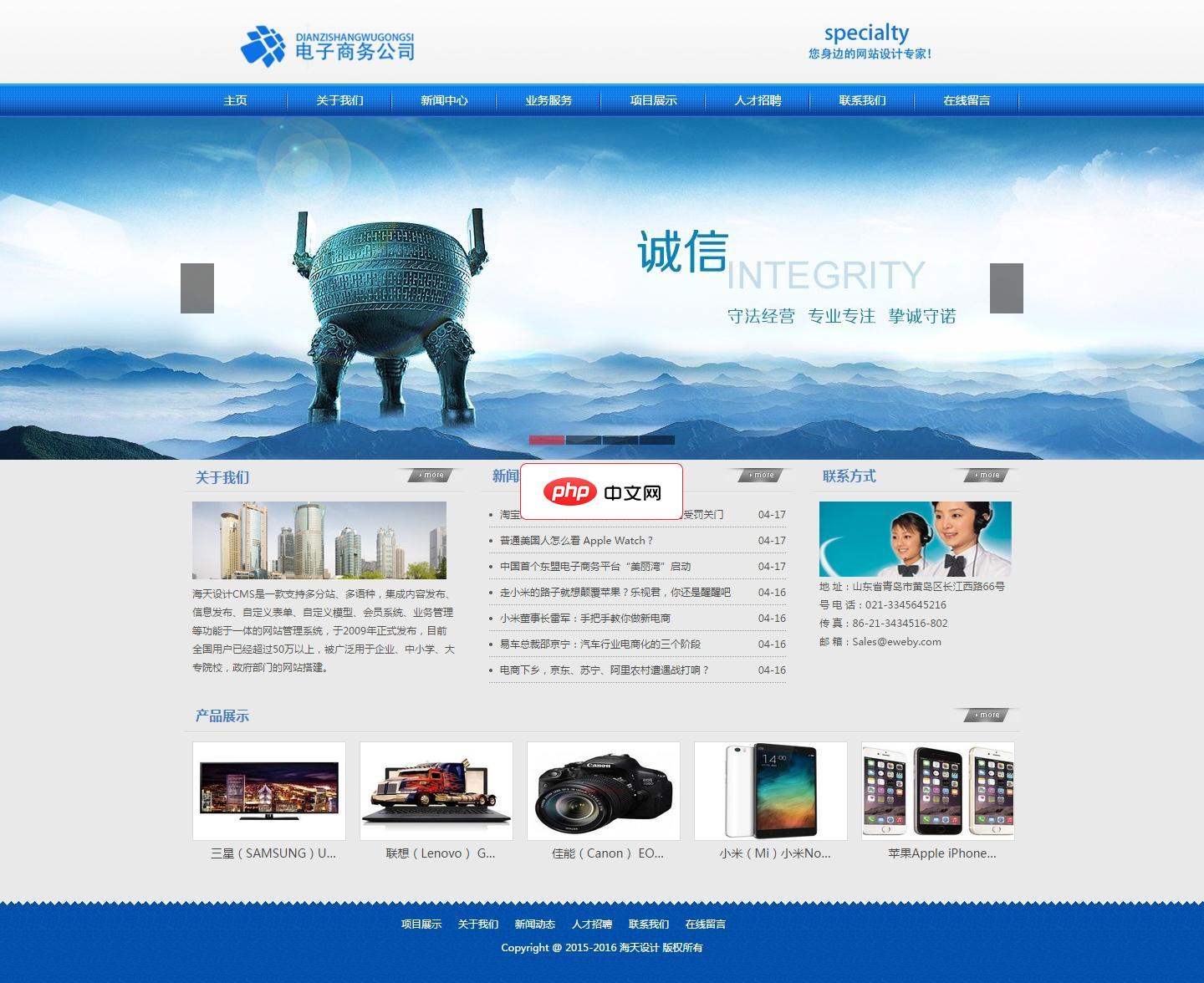
引言:动态展示分类最新文章与排序挑战
在 wordpress 网站开发中,常见需求之一是展示各个分类的最新文章。然而,当需求进一步升级,需要根据每个分类下最新文章的发布时间来动态调整分类本身的显示顺序时,传统的 get_categories() 函数配合简单的 orderby 参数就显得力不从心了。例如,当“新闻”分类有新文章发布时,即使“技术”分类的 id 更小,我们也希望“新闻”分类能优先显示,因为它包含了最新的内容。本教程将详细介绍如何通过分步策略解决这一挑战,实现分类的动态排序与最新文章的展示。
核心思路:两阶段查询与排序
要实现根据分类最新文章日期来排序分类,并显示每个分类的最新文章,我们需要采用一个两阶段的处理方法:
阶段一:收集分类最新文章信息 首先,我们需要遍历所有的分类。对于每个分类,执行一次轻量级的 WP_Query 查询,以获取其下最新文章的发布日期。我们将分类对象及其最新文章日期配对存储起来。
阶段二:排序分类并展示内容 在收集到所有分类及其最新文章日期后,我们可以使用 PHP 的数组排序功能(如 usort)根据这些日期对分类进行降序排列。排序完成后,再遍历这些已排序的分类,对每个分类执行一次 WP_Query 来获取并展示其最新的文章内容。
详细实现步骤与代码示例
以下是实现这一功能的具体步骤和相应的代码:
步骤一:收集所有分类及其最新文章发布日期
此步骤的目标是构建一个包含分类对象和其最新文章发布日期的数组。为了优化性能,在查询最新文章日期时,我们只获取文章 ID,避免加载完整的文章数据。
true, // 只获取有文章的分类
'orderby' => 'name', // 初始排序不重要,因为我们后续会自定义排序
'order' => 'ASC',
));
if (!empty($all_categories)) {
foreach ($all_categories as $category) {
// 为每个分类执行 WP_Query,获取其最新文章的日期
$args = array(
'cat' => $category->term_id,
'post_type' => 'post',
'posts_per_page' => 1, // 只获取一篇文章
'orderby' => 'date', // 按日期排序
'order' => 'DESC', // 降序,即最新文章
'fields' => 'ids', // 仅获取文章ID以优化性能
'no_found_rows' => true, // 优化查询,不需要计算总行数
'update_post_term_cache' => false, // 禁用缓存
'update_post_meta_cache' => false, // 禁用缓存
);
$latest_post_query = new WP_Query($args);
if ($latest_post_query->have_posts()) {
$latest_post_id = $latest_post_query->posts[0];
// 获取最新文章的发布日期
$latest_post_date = get_the_date('Y-m-d H:i:s', $latest_post_id);
// 将分类对象和最新文章日期存储起来
$categories_with_latest_post_dates[] = [
'category' => $category,
'latest_post_date' => $latest_post_date,
];
}
wp_reset_postdata(); // 重置查询,避免影响主循环
}
}
?>步骤二:根据最新文章日期对分类进行排序
在收集到 categories_with_latest_post_dates 数组后,我们将使用 PHP 的 usort 函数根据 latest_post_date 字段对其进行降序排序。
步骤三:遍历排序后的分类并显示最新文章
现在,categories_with_latest_post_dates 数组已经按照分类的最新文章日期进行了排序。我们可以遍历这个数组,并为每个分类再次执行 WP_Query 来获取并展示其最新文章的详细内容。

蓝色大气通用企业公司网站源码,这是一款采用经典的三层结构,可以动态、伪静态模式,后台功能实用,界面大气,无限级分类,单篇栏目添加等的企业网站源码,比较适合二次开发或者企业自用,感兴趣的可以下载看一下啊。网站源码完整,后台是我作为程序员多年认为最为好用的一款后台,有时间我将发布更多的模板供大家下载使用,数据库为ACCESS,如需MSSQL数据库可与我联系。功能介绍:【新闻文章管理】可以发布公司新闻和
name); ?> 最新文章
$category->term_id,
'post_type' => 'post',
'posts_per_page' => 1,
'orderby' => 'date',
'order' => 'DESC',
'no_found_rows' => true,
'update_post_term_cache' => false,
'update_post_meta_cache' => false,
);
$posts_query = new WP_Query($post_args);
if ($posts_query->have_posts()) {
while ($posts_query->have_posts()) {
$posts_query->the_post();
?>
>
此分类暂无文章。';
}
wp_reset_postdata(); // 每次自定义循环结束后重置查询
?>
暂无分类或文章可显示。';
}
?>注意事项与性能优化
-
性能考量: 此方法涉及多次 WP_Query 查询(第一次用于获取日期,第二次用于显示内容),这可能会在分类数量较多时对性能产生影响。对于大型网站,建议考虑以下优化:
- 缓存: 使用 WordPress 的 transient API 或对象缓存插件(如 Redis Object Cache, Memcached)来缓存 categories_with_latest_post_dates 数组。例如,可以设置一个每小时更新的缓存。
- 优化查询: 在第一次查询时,使用 fields => 'ids' 和禁用缓存参数 (no_found_rows, update_post_term_cache, update_post_meta_cache) 来减少数据库负载。
空分类处理:get_categories(array('hide_empty' => true)) 确保我们只处理有文章的分类。如果某个分类在第一阶段被检测到没有最新文章($latest_post_query->have_posts() 为 false),它将不会被添加到待排序的数组中,从而避免了显示空分类。
自定义文章类型: 如果你的网站使用了自定义文章类型(Custom Post Types),并且希望这些文章也能参与排序和显示,请确保在 WP_Query 的 post_type 参数中包含它们,例如 'post_type' => array('post', 'your_custom_post_type')。
模板标签: 代码中使用了 the_permalink(), the_title(), the_post_thumbnail(), the_excerpt(), get_the_date() 等标准的 WordPress 模板标签。你可以根据自己的主题和需求,替换或添加更多标签,例如 the_author()、comments_popup_link() 等。
CSS 样式: 代码中的
和 标签都包含了 CSS 类(如 category-listing-block, latest-category-post)。你需要根据这些类在你的主题样式表中定义相应的 CSS 规则,以确保内容的正确显示和美观布局。
总结
通过上述两阶段的查询与排序策略,我们成功解决了 WordPress 中根据分类最新文章日期动态排序分类并展示其最新内容的问题。这种方法提供了高度的灵活性和可定制性,能够帮助你创建更具吸引力和动态的网站内容布局。在实际应用中,请务必根据网站的规模和性能要求,考虑实施适当的缓存策略以优化用户体验。





























